Zeg.
It’s a Georgian word that has no English equivalent. According to an article from The Week, zeg is “the day after tomorrow”. So while the meaning is simple enough and we certainly have a full phrase to express it when we need to, evidently the concept is not so important for those of us who speak English as a primary language (I’d suspect the same is true for speakers of most other languages too) as to warrant it’s own simple, elegant, three-letter word.
Right? Wrong.
The concept is vital. And since this is a business blog and I’m no linguist, my newfound discovery of an old Georgian word has inspired me not to lobby for yet another addition to the Oxford Dictionary but instead to assert that a clear-eyed vision for what zeg really means should be at the very core of your business.
Thinking about zeg forces business leaders to adopt a futures orientation — to think about what not only tomorrow but the day after tomorrow will look like; consider what challenges and opportunities will present themselves; and muster the courage to make the right decisions today given our foresight into the the future that is arriving faster by the minute. Thinking about zeg fuels innovation — gives us the drive to imagine how the wants and needs of our consumers, constituents, collaborators and communities may one day be different; and the confidence to anticipate those new wants and needs by evolving how we serve our markets. In fact, preparing for zeg sits at the heart of every good strategy — in a world that is changing faster than ever before, today’s strategy (which — let’s be honest — is often built on a foundation of yesterday’s formulas for success) is obsolete even before the ink on your plan is dry. But a strategy formulated with the day after tomorrow in mind is far more likely to be sustainable over time.
Sure, you can live in the now in a business built to optimize returns this week, this month, this quarter, even this year. And of course, you can certainly keep an eye out for tomorrow — but don’t you think your strongest competitors, the leaders you already tend to chase from behind, the disruptors overtaking you even as you’re reading this post may already have a bead on tomorrow? Or you can leapfrog both tomorrow and your competition and build a business that is ready for zeg.
I’m not arguing against current quarter performance. You need to survive today (and tomorrow) if you want to live to see zeg. But too often, business leaders get so mired in the present (which given today’s rate of change is practically the same as being stuck on the past) that they fail to build organizations that are ready to thrive when the not-so-distant future arrives.
Understand this — and do something about it — and your organization just might have as many words for “the day after tomorrow” as the Inuit have for snow.





